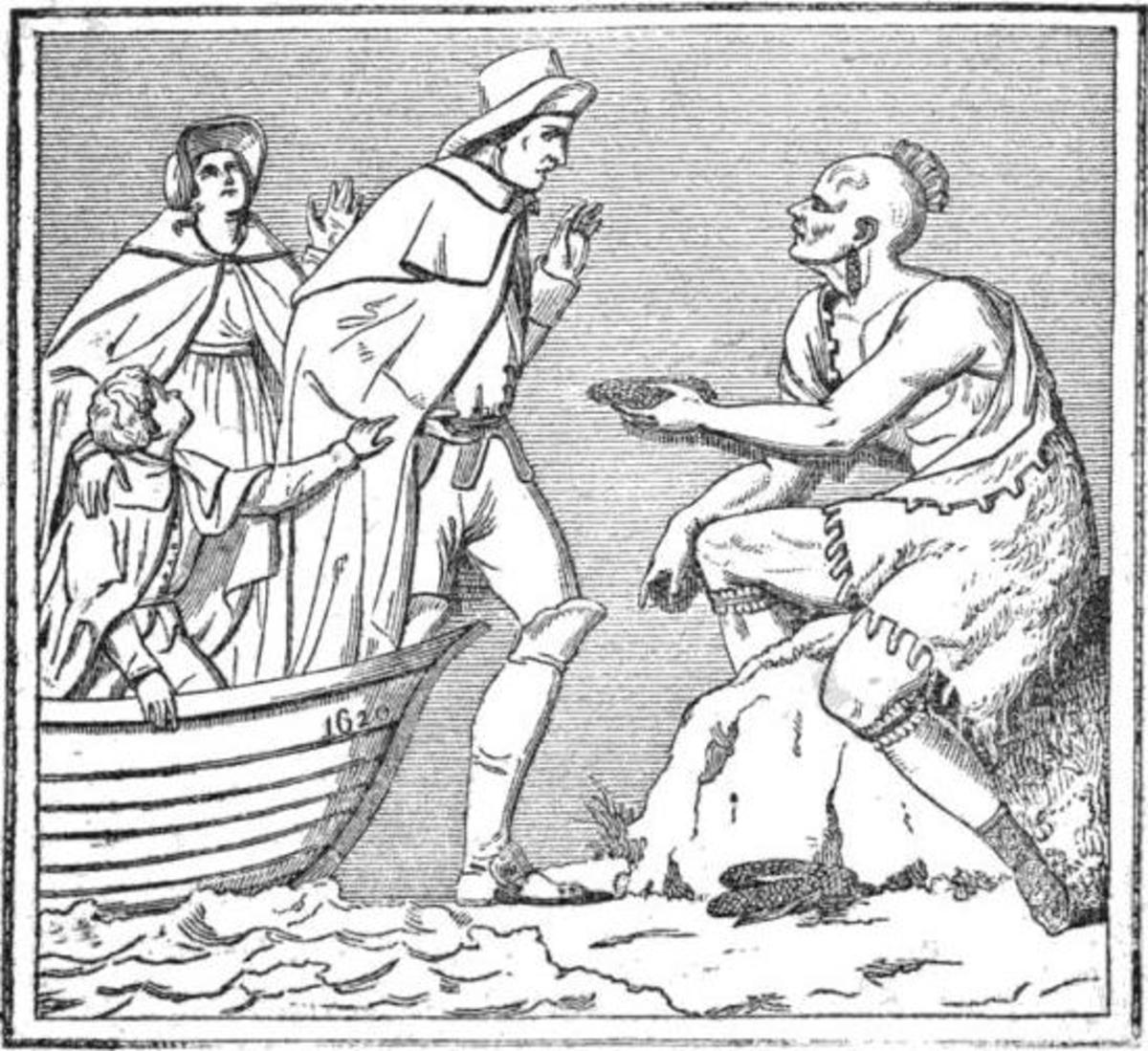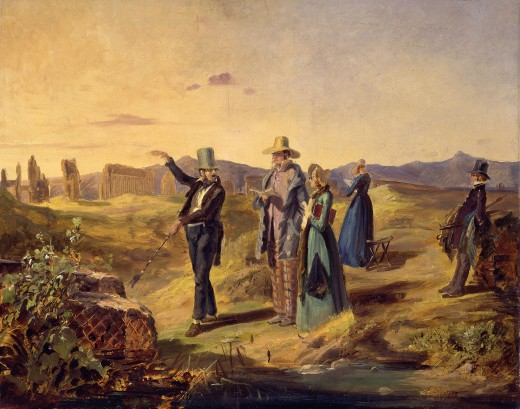The Sick Man of Europe
The
Ottoman Empire was the Muslim successor of the old Christian Byzantine Empire
that was in turn based on the Eastern Roman Empire. Centred on Constantinople
(Istanbul), at its height in the late 16th century it occupied much
of south-eastern Europe stretching nearly as far as Vienna, as well the whole
of the Levant, Egypt, modern-day Iraq, and the north African coast as far west as
Algiers.
However,
the Empire proved to be too unwieldy to hold together, especially when an expanding
population could not be fed and the central government refused to modernise at
a time when the countries of Europe were doing
so. For much of the 19th century, the Ottoman Empire was the “Sick Man
of Europe”. The invalid’s continuing decline led the great powers to have many
sleepless nights over what would happen when he died.
Britain
Versus Russia
The
British government, at the heart of a growing worldwide empire, was as
interested as anyone in the health of the old Ottoman
Empire, from several perspectives. For one thing, the “jewel in
the crown” of the British Empire was India,
and anything that affected the security of India, or free passage in that
direction, was a matter of great concern. For another, the imperial ambitions
of Russia
had to be countered. France
was another rival to be kept in check.
During
the middle years of the 19th century, British foreign policy was
driven by a remarkable man, Viscount Palmerston, who sat in the House of
Commons by virtue of his peerage being an Irish one. With only a few
interruptions he held high office from 1809 to 1865, mostly as either Foreign
Secretary or Prime Minister. His was a tough “no nonsense” approach, his
response to crises often being to “send a gunboat”, but he was also a master of
the game of international politics and adept at playing his cards with skill
and cunning.
In
1829, Britain supported Greece in its war of independence, but
Palmerston then came to realise that the Ottoman Empire had great value in
being a buffer to Russian ambitions, especially where they concerned access to
the Mediterranean through the Bosphorus and Dardenelles, the narrow waterways
that led through Ottoman territory to the Black Sea.
The last thing Britain
wanted was Russian warships patrolling the Mediterranean and threatening
British trade and her route to India.
The
Ambitions of Mehemet Ali
A
crisis arose as a result of the Greek revolt, in that the Sultan had called for
assistance from his powerful Egyptian viceroy, Mehemet Ali, who now sought a
substantial reward for his efforts. The Sultan offered him Crete, but Mehemet
Ali really wanted Syria.
To complicate matters, France
had been very active in supporting Mehemet Ali in his modernising and expansion
of Egypt,
and they were likely to support him in any action he took.
When,
in 1831, Mehemet Ali’s army swept through the Levant and threatened the territory of Turkey
itself, the Russians offered protection to the Sultan and sent a fleet to Constantinople. The British put pressure on the
Sultan to buy off Mehemet Ali with the territory he sought, after which the
Russians also withdrew. The Russian price was a treaty that closed the
Dardanelles to the enemies of Russia,
a situation that was far from satisfactory to Lord Palmerston.
In
1839 the British prompted Ottoman Turkey to take revenge on Mehemet Ali, but
the Egyptian army and navy proved to be too strong. Palmerston now sought to
threaten Egypt with an
ultimatum, but the French took Mehemet Ali’s side and tried to negotiate a
direct deal between Turkey
and Egypt.
Tempers rose on all sides, and for a time it seemed possible that Britain and France might go to war over the
issue.
Palmerston
was reluctant to climb down and even sent a fleet to bombard the Syrian coast,
but eventually he was pacified by a deal whereby Mehemet Ali gave up Syria but stayed as the hereditary ruler of Egypt. The best
result from Britain’s point
of view was that the Dardanelles were now
declared closed to the warships of all nations.
The
Next Crisis
The
next time that British foreign policy impacted the Ottoman
Empire was in the 1840s. The sick man’s health was not improving,
and in 1844 Britain and Russia agreed
to consult over what should replace the Empire should it collapse. Meanwhile, Britain and France were in agreement that
Russian ambitions should be curtailed. However, towards the end of the decade Russia became convinced that the Ottoman Empire could not last much longer and started to
exert considerable influence in the Balkans, where a number of states were showing
signs of pushing for independence. While still wanting to preserve the Ottoman
Empire, it was clearly Russia which was pulling the strings in this region.
The
Crimean War began almost by accident, occasioned by Russian efforts in 1853 to
put pressure on the Sultan over the protection of Christians within the Empire.
The British and the French supported the Sultan, and when the latter declared
war on Russia, an
Anglo-French fleet entered the Black Sea in
support of the Turks and three years of war followed. At the end of the war the
sick man was no better. The Sultan promised to improve the lot of his Christian
subjects, but did little to keep his promise.
The
Suez Canal
The
opening of the Suez Canal in 1869 brought the
British and Ottoman Empires into direct confrontation. The building of the
canal had been one of the many modernisation projects that the then Khedive of
Egypt, Ismail, had begun during a period of great prosperity. However, the
financing of the canal had required Egypt to take foreign loans on
terms that proved to be ruinous and brought the country to the verge of
bankruptcy. In 1875 the British government bought out the Egyptian government’s
shares in the canal at a bargain price, and the canal, built by Egyptian labor
and largely at Egyptian expense, was now destined to benefit only those foreign
nations who were in any case going to benefit from the new trade routes that
the canal made possible.
Egypt was now forced to accept
domination by the French and the British, who virtually ran the economy in ways
that were highly disadvantageous to the Egyptian people. Not only did they have
to pay interest on their loans and dividends to the canal bondholders, but they
also had to pay tribute to the Ottoman Sultan. The money was raised from taxes
on the peasantry, many of whom were reduced to starvation.
Eventually,
the Egyptian people and army rose in revolt, and the British response was to
crush the revolt with considerable force. In July 1882 the port city of Alexandria was bombarded
from the sea with the loss of around 2,000 civilian lives. In September, the
battle of Tel-el-Kebir resulted in the deaths of 57 British soldiers and
perhaps as many as 10,000 Egyptians.
The
Sudan
However,
the easy British victory turned to dust later that year when the territory to
the south of Egypt (modern-day Sudan) rebelled, under a fundamentalist Islamic
leader who declared himself to be the “Mahdi”. The British grossly
underestimated the forces that opposed them, with the result that an army
column was destroyed and the celebrated British general, Charles Gordon, became
cut off in Khartoum
and was killed before he could be rescued. The British socialist William Morris
wrote, “Khartoum
has fallen, into the hands of the people it belongs to”. The Sudan was not re-captured until
1898 when, at the Battle of Omdurman, the slaughter of the native army,
including the murder of wounded prisoners as revenge for the death of General
Gordon, sickened the young Winston Churchill.
World
War I
When
the First World War broke out in 1914, the Sultan sided with the Central Powers
of Germany and Austria-Hungary.
It is quite possible that, had the war started 20 years earlier, Turkey would
have been allied with Britain and the other “entente” powers (France and
Russia), but the virtual British takeover of Egypt and support for anti-Turkish
groups in the Middle East had changed things.
As
First Lord of the Admiralty, Winston Churchill masterminded a naval attack in
1915 on the Gallipoli Peninsula that overlooked the Dardenelles, with a
view to opening a route to Britain’s
new ally, Russia.
This was a military disaster, with huge losses being inflicted on the British
Empire forces (more than 44,000 killed), which included a large number of Anzac
(Australia and New Zealand) soldiers
and sailors.
Despite
the fact that Ottoman casualties were greater in number than those of the
Allies, their victory gave them fresh hope of being able to revive the Ottoman Empire. In striving to reassert their authority
in the Arab lands under their somewhat shaky control, they inspired the “Arab
Revolt” of 1916-18, which was then supported by the British, led on the ground by
Colonel T. E. Lawrence (“Lawrence of Arabia”). Lawrence was instrumental in
uniting many disparate Arab forces and getting them to carry out attacks, for
instance on the railway that ran south from Damascus, that in turn diverted
thousands of Ottoman troops from their main objectives.
Post-War
Policy
The
main Arab aim had been to replace the Ottoman Empire with an Arab Caliphate
that would have extended across much of the Middle East.
However, the European powers had other ideas, and the post-war partition of the
Ottoman Empire took little account of Arab
views. Various promises had been made during the war in order to gain support
for the war effort, but it proved impossible to keep all of them due to their
conflicting nature. In particular, Lawrence had
promised the Arabs that they would have an independent state covering most of
the region, but the Balfour Declaration of 1917 promised support for a Jewish
state within Palestine.
The consequences of those mixed messages are with us to this day.
Under
the League of Nations, Britain
and France were granted
mandates over various parts of the old Ottoman Empire, with the British
mandates covering Palestine, Transjordan and
Mesopotamia (modern Iraq).
By drawing straight-line boundaries around territories that had never had fixed
borders before, the new masters of the region created all sorts of problems for
future generations, such as the division of Kurdish lands between four modern
states.
All
in all, British foreign policy had a huge impact on the Ottoman
Empire over a long period of time. It cannot be said that the
policy was always wise or far-sighted, and its ramifications affect
international relations even now.
© John Welford










